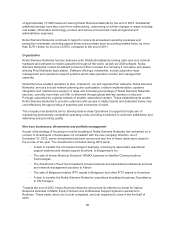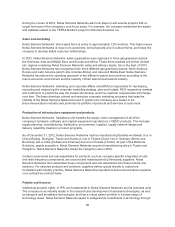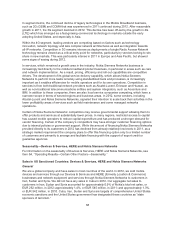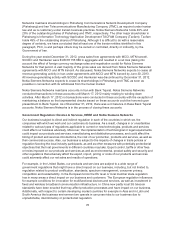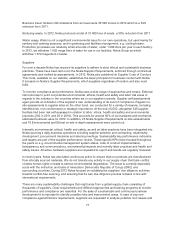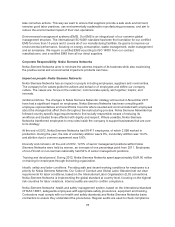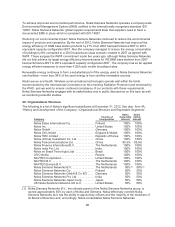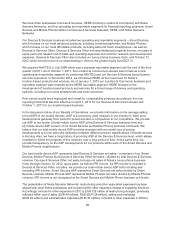Nokia 2012 Annual Report Download - page 73
Download and view the complete annual report
Please find page 73 of the 2012 Nokia annual report below. You can navigate through the pages in the report by either clicking on the pages listed below, or by using the keyword search tool below to find specific information within the annual report.Fund for Nature). In each of these partnerships we have provided not only financial support, but also
our technology, resources and expertise on an ongoing basis for projects in which we are working
jointly together.
Education. Mobile technology can provide access to quality education materials and support to
teachers, learners and their families, and mobile communication enables the delivery of education
to people, instead of people to education. In that sense, mobile learning initiatives help in
improving equality in educational achievement, as girls tend to be disadvantaged in school
attendance in many parts of the world. The cost of providing good quality learning content can also
be reduced and the teaching environment can be transformed into a more collaborative and
motivating environment with mobile technology. Furthermore, concepts such as our Nokia Life
subscription-based service also show the potential of affordable education delivery to people on a
large scale. We currently offer Nokia Life in China, India, Indonesia, Kenya and Nigeria, and by
late 2012, approximately 90 million people had experienced the service, more than double the
number from a year earlier. Our other initiatives specifically related to education and which are
designed to support our corporate responsibility goals include:
•Nokia Education Delivery, software which enables delivery of quality education materials over
mobile networks to the classroom, particularly useful in hard-to-reach areas. Combined with
teacher training and community engagement, it has been shown to improve academic results
and increase retention among students, especially girls.
•Nokia Mobile Mathematics is a mobile service that combines official mathematics curricula
with social networking. At the end of 2012, the service reaches approximately 50 000 students
(more than double the number since the end of 2011), approximately 700 teachers and
approximately 200 schools in South Africa.
Health. Nokia Data Gathering contributes to health as one of its many uses. It is an open source
platform which allows any organization to collect data via mobile phones, and it has been used for
example in preventing and controlling disease outbreaks. Our Nokia Life service disseminates
useful information and advice on pregnancy and maternal health, childcare and parenting skills,
and family health in general.
Livelihoods. Nokia Data Gathering software replaces traditional data collection methods with
mobile devices, improving results and saving time and money. The open source model allows us
to offer the software on a large scale, providing clients with flexibility and supporting the creation of
livelihoods for systems integrators and developers. Almost 300 organizations use Nokia Data
Gathering, making it one of the most used mobile data collection solutions globally. Examples of
its successful use include the mapping of water points in Kenya by UN FAO, resulting in a faster
reaction to drought in East Africa. We also support agricultural livelihoods through Nokia Life,
which gives its subscribers regular and relevant information updates on local market prices,
weather conditions, the availability of seeds, fertilizers and pesticides, as well as news and advice.
Nokia values. Nokia’s change of strategy in 2011 underlined the need for our employees to adopt the
mind-set of a challenger, which emphasizes results, speed and accountability and requires us to adopt
new attitudes and pursue new approaches to satisfy our customers.
Impact on our employees. During 2012, as we continued to implement our strategy, we made some
difficult decisions which have impacted Nokia sites and resulted in headcount reductions. These
changes have included the closure of our production facility in Salo, Finland, and our research and
development facilities in Ulm, Germany, and Burnaby, Canada. We also divested certain non-core
activities, including Vertu, our luxury mobile device brand. Additionally, we acquired new talent both by
hiring people who can bring us new expertise we need, and through small acquisitions, including that
of Scalado, a Sweden-based company, to support our ambitions in imaging.
72





